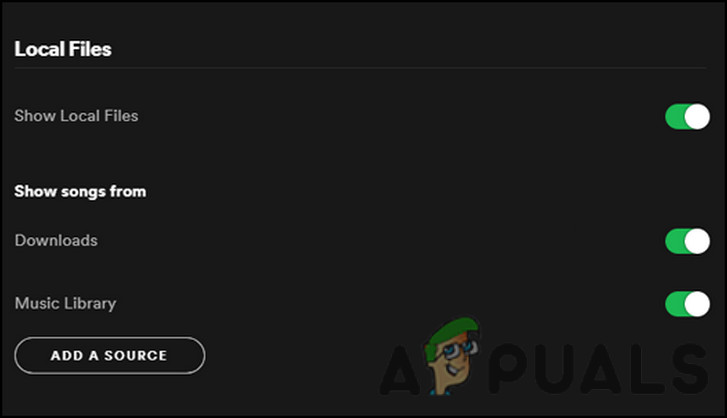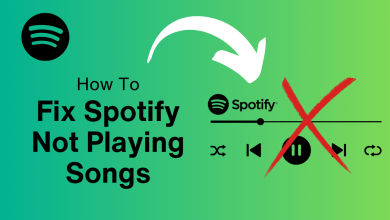Spotify Local Files Not Showing? Try these Solutions
Spotify local files are your own files that you add to the platform from your device. There are times when the songs you want to listen to are not available on Spotify. If you are someone who has a big personal collection and want to add it to Spotify to create a playlist there, the platform allows you to do that easily through local files. Once the files are added and synced, you can listen to them on all the devices you use Spotify on.

If you are having trouble viewing the Spotify local files, follow the troubleshooting methods below to fix the problem:
1. Enable the Local Files Option
If the ‘Show local files’ option is not enabled on Spotify, then you will not be able to see any of the files that you might have added manually. In this case, the solution is simple, as all that you need to do is enable the option back in the Spotify settings.
Here is what you need to do:
- Launch Spotify and expand the username section on the top right.
- Choose Settings from the context menu.
If you were facing a problem with the Spotify local files simply because the feature was disabled, the steps listed above should fix the issue in no time.
2. Update the Spotify Application
Several corruption errors and problems like the one at hand can also arise because of an outdated version of the app. When you do not install the updates, you make the software prone to vulnerabilities, as well as experience system failure.
This is why it is important to keep the application updated on all devices.
To update the Spotify app on your phone, follow these steps:
- Launch Play Store and search for the Spotify app.
Once that is done, proceed with updating the desktop application by following the steps below:
- Launch the app and click on the Profile section in the top-right corner.
- Choose Update available from the context menu. If you do not see this option, then it implies that the Spotify version you are using is already up-to-date.
3. Delete the index.dat File
According to several affected users, another fix that worked for them was deleting the index.dat file from the folder containing their local files. Apparently, this file which is automatically generated by Spotify when you first install the application can get corrupt at times, leading to the issue at hand.
The good news is that the file is not critical, which means it is safe to delete it to fix the problem.
Here is how you can proceed:
- Head over to the folder of your local files and locate the index.dat file.
Once done, close the Settings window and check if you can now see the Spotify local files without any problems.
4. Modify Firewall Settings
Windows Defender Firewall typically does a great job in maintaining the security of the operating system. However, there are times when it blocks some legitimate features of applications because of false alarms.
As for the Spotify error, there is also a chance that Windows Defender is at fault, so we will try changing its settings and see if that helps. Before you proceed, make sure that your mobile device and computer are connected to the same network.
Once that is done, follow these steps to proceed:
- Type Control Panel in the search area of the taskbar and click Open.
- In the following window, change the View by option to Large icons and then look for the Windows Defender Firewall option.
Upon reboot, check if the Spotify local files problem is resolved.
If in case you are using third-party antivirus software, then the best way to go about this situation is by disabling the antivirus program temporarily and seeing if that makes a difference.
For that, right-click on the antivirus icon located on the taskbar and choose Disable for 30 minutes. If that works, then you can whitelist Spotify from the security software to fix the issue.
5. Clear Cache Files
Much like the index.dat file that we discussed above, the temporary cache files of Spotify can also get corrupted and cause issues within the application.
These files too are temporary, so you can delete them to fix the problem. However, deleting the cache files may make you lose data like the username and password, meaning you won’t be able to log into the application automatically. Other than that, there is no harm in deleting the cache files.
Here is how you can proceed:
- Launch Spotify and navigate to Settings.
- Check the offline storage location and head over to it via File Explorer.
To clear the cache on an Android device, follow these steps:
- Press and hold the Spotify app icon and choose App info.
6. Uninstall the Spotify App
Finally, if none of the methods above have worked for you in fixing the Spotify local files issue, then you can proceed with uninstalling the app as the last resort.
Uninstalling will remove the app and its contents completely, hopefully resolving the error in the process.
If in case even that does not work for you, then we highly recommend reaching out to a Spotify support representative and explaining the issue to them. They might be able to pinpoint the exact cause of the issue in your case and suggest a solution accordingly.





